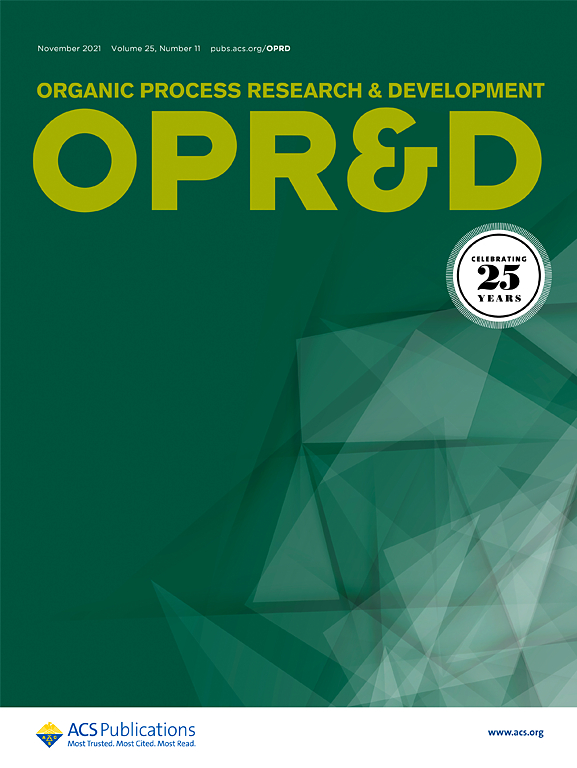Development of a Broadly Applicable Enzymatic Ligation Process for the Production of Single Guide RNAs
IF 3.1
3区 化学
Q2 CHEMISTRY, APPLIED
引用次数: 0
Abstract
In this manuscript, we present a robust chemo-enzymatic approach for the production of single guide RNAs (sgRNAs), essential reagents for CRISPR-Cas9-based cell and gene therapy applications currently under development. Our method leverages ligase-mediated assembly of two RNA fragments, each synthesized using standard solid-phase chemistry. This versatile process has been applied, without modification, to produce a variety of GMP-grade sgRNAs, supporting our clinical ex vivo cell therapy pipeline. We demonstrate that our approach consistently achieves higher purity (10–15% improvement in LC-UV area%) and significantly greater yield (3–4 times higher) compared to traditional linear solid-phase synthesis, which is commonly used for sgRNA production. Importantly, the process utilizes T4 RNA ligase 2, a natural, nonengineered enzyme, which can be easily sourced from several vendors. We believe that openly sharing this method will drive significant progress in the development of cell and gene therapies, enabling the production of higher-quality sgRNAs at lower cost, ultimately improving accessibility and treatment outcomes for patients.

一种广泛应用于生产单个引导rna的酶连接工艺的发展
在这篇论文中,我们提出了一种强大的化学酶促方法,用于生产单导rna (sgRNAs),这是目前正在开发的基于crispr - cas9的细胞和基因治疗应用的基本试剂。我们的方法利用连接酶介导的两个RNA片段的组装,每个片段都使用标准固相化学合成。这种通用工艺已被应用于生产各种gmp级sgrna,支持我们的临床体外细胞治疗管道。我们证明,与通常用于sgRNA生产的传统线性固相合成相比,我们的方法始终能够获得更高的纯度(LC-UV面积提高10-15% %)和显着更高的收率(提高3-4倍)。重要的是,该过程使用T4 RNA连接酶2,这是一种天然的,非工程酶,可以很容易地从几个供应商处获得。我们相信,公开分享这种方法将推动细胞和基因疗法的发展取得重大进展,从而以更低的成本生产更高质量的sgrna,最终改善患者的可及性和治疗效果。
本文章由计算机程序翻译,如有差异,请以英文原文为准。
求助全文
约1分钟内获得全文
求助全文
来源期刊
CiteScore
6.90
自引率
14.70%
发文量
251
审稿时长
2 months
期刊介绍:
The journal Organic Process Research & Development serves as a communication tool between industrial chemists and chemists working in universities and research institutes. As such, it reports original work from the broad field of industrial process chemistry but also presents academic results that are relevant, or potentially relevant, to industrial applications. Process chemistry is the science that enables the safe, environmentally benign and ultimately economical manufacturing of organic compounds that are required in larger amounts to help address the needs of society. Consequently, the Journal encompasses every aspect of organic chemistry, including all aspects of catalysis, synthetic methodology development and synthetic strategy exploration, but also includes aspects from analytical and solid-state chemistry and chemical engineering, such as work-up tools,process safety, or flow-chemistry. The goal of development and optimization of chemical reactions and processes is their transfer to a larger scale; original work describing such studies and the actual implementation on scale is highly relevant to the journal. However, studies on new developments from either industry, research institutes or academia that have not yet been demonstrated on scale, but where an industrial utility can be expected and where the study has addressed important prerequisites for a scale-up and has given confidence into the reliability and practicality of the chemistry, also serve the mission of OPR&D as a communication tool between the different contributors to the field.

 求助内容:
求助内容: 应助结果提醒方式:
应助结果提醒方式:


